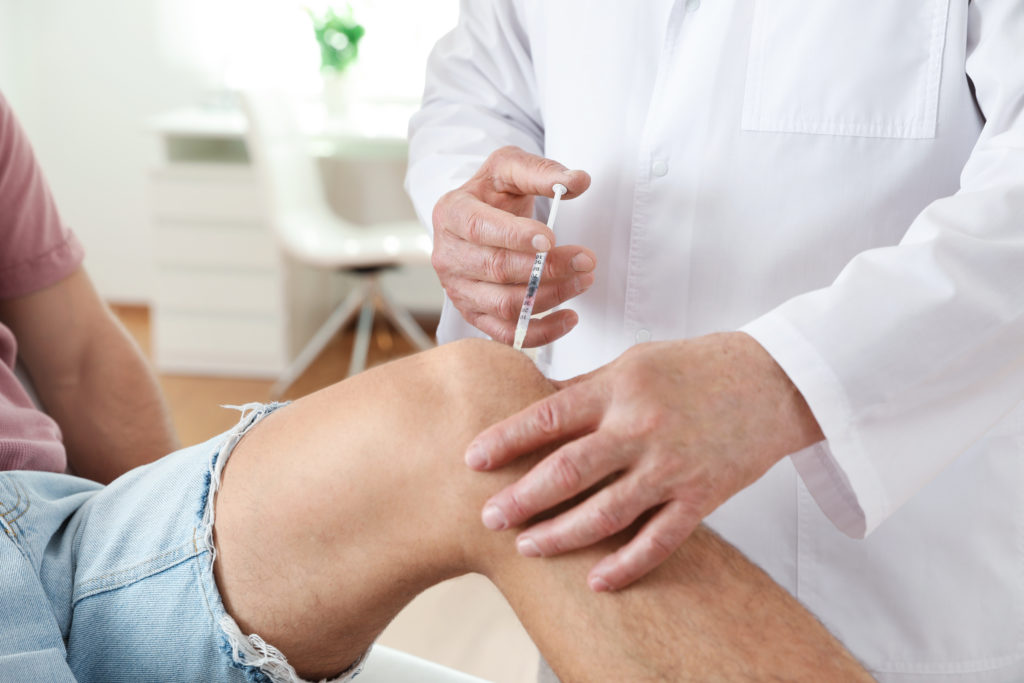Corticosteroid injections reduce joint pain by combating inflammation. Here’s what you need to know about this treatment option.
If you suffer from severe joint pain, your orthopedist may recommend a corticosteroid injection to reduce discomfort. These injections successfully treat inflammation in the shoulder, elbow, back, knee, or wrist, and are often recommended for tendonitis, bursitis, and arthritis.
In addition to relieving pain, corticosteroid injections allow you to regain full range of motion in your joints. For instance, corticosteroid injections can unlock a frozen shoulder that has severely limited function because of an inflammation of the shoulder capsule, the connective tissue that holds the shoulder together.
The goal of corticosteroid injections is to reduce inflammation, which can eliminate joint pain for several months. You’ll also feel immediate pain relief after the injection because the corticosteroid is mixed with an anesthetic.
Although corticosteroid injections target several orthopedic disorders, they are commonly used to help patients overcome back pain caused by damaged spinal discs. Torn discs may not show up on an X-ray or MRI, but if an epidural steroid injection to the lower spine, for example, lessens pain, then the likely source of the discomfort is a torn disc in that region of the back. In that regard, corticosteroid injections not only alleviate discomfort, but also help a physician determine where the source of a patient’s pain is.
How Corticosteroids Are Administered
Your doctor will most likely administer a corticosteroid injection in their office. Be sure to tell your doctor if you take blood thinning medication before the shot is given. If the joint is swollen, your doctor will drain the fluid before giving the injection.
A numbing agent will be applied to the area, so you shouldn’t feel any pain from the actual injection. Using an ultrasound or a type of X-ray known as a fluoroscopy to guide the needle into the joint or the exact spot where the pain radiates, the doctor inserts the corticosteroid into the joint or soft tissue and releases the medication.
Unlike oral steroids and anti-inflammatories, corticosteroid injections directly attack inflammation because the shots go to the root of the pain. However, it may take 48 hours for the corticosteroid to take full effect, and you may notice an increase in pain following the injection. But that discomfort is temporary, and the pain-management effects of corticosteroid injections can last for months.
Though corticosteroids are safe and effective, you’ll need to follow some simple steps after your injection. If your knee is affected, you should stay off your feet as much as possible. If the shot was in your shoulder, avoid heavy lifting for at least two days. You can ice the site, but don’t apply heat. People with diabetes may experience a spike in blood sugar after injection. Watch for any signs of infection, such as pain, redness, and swelling, in the area, as well. In general, avoid strenuous exercise for a day or two.
In some cases, only one corticosteroid injection is necessary to eliminate the pain. For other conditions, your doctor may recommend a series of injections. Corticosteroids can result in a weakening of the tendons and cartilage — among other symptoms — which is why injections are typically limited to every six weeks three or four times a year.
Visit an Orthopedist Specialist
At New York Bone & Joint Specialists, we’ve successfully treated many patients with corticosteroid injections. We know you’ll have questions about the procedure, and we’re happy to address your concerns. Joint pain can be especially debilitating, and we believe corticosteroid injections can effectively eliminate your discomfort so you can enjoy a great quality of life. Contact us today for an appointment.




